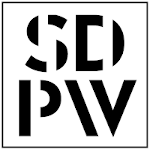Wykaz obszarów badawczych związanych z tagiem Druk-3D:
| # | Obszar badawczy | Dziedzina naukowa |
|---|---|---|
| 1 |
Topic: New techniques of ultrasonic atomization of metals and alloys
The proposed research area covers fabrication of powders of various materials by ultrasonic atomization, using arc and induction melting. Tests of powders in terms of their applications for 3D printing and description of optimal atomization conditions and analysis of critical process parameters. Optimization of ultrasonic atomization processes supported by simulation tools. Comparison of the powders obtained with powders produced by other methods available on the market. Making prints from selected powders and developing a system for assessing their quality. Development of a method of removing support structures for printed materials and evaluation of the print surface after cleaning. Analysis of critical parameters of the process of removing support structures.
|
|
| 2 |
The main areas of scientific of prof. Paweł Sobieszuk include chemical engineering and bioprocess engineering. His research works are tackling the problems concerning nanohydroxyapatite synthesis and characterization for application in bone regeneration therapy. Especially important is designing the method of obtaining composites of polymer and nanohydroxyapatite in such a way that the mechanical properties of polymer allow for it to be used in 3D printing while preserving the osteoinductive properties of hydroxyapatite. Because of these two properties, it is possible to use such composites in the 3D printing of osteoinductive implants of bones. His other study area focuses on gas-liquid systems, including nanobubble technology, properties, and application. Nanobubbles are a novel nanomaterial composed of gas spheres in liquid with or without a surfactant shell surrounding the gas. Such objects are used in multiple areas of both industry and medicine. Prof. Sobieszuk particularly finds it interesting to study the effect of gas nanobubbles on living matter, bacteria, microscopic fungi, and animal cells.
|
|
| 3 |
The research focuses on manufacturing, characterization and numerical modelling techniques to design the microstructure and properties of porous materials and the processes taking place in them. Fabrication of materials is based on such techniques as: tape casting, 3D printing, chemical and electrochemical surface modification. Characterization includes advanced studies of the structure of materials (porosity measurements, electron microscopy, X-ray tomography, FIB-SEM and quantitative analysis of both 2D and 3D structure images). Characterization also includes electrochemical testing (including EIS tests), permeability and electrical conductivity tests. An important element of the research is the modeling of structure, properties and processes using advanced computer modeling techniques, such as: DFT, molecular dynamics and FEM. The area of application of the manufactured materials includes, in particular: catalysts, fuel cells, filters and membranes – passive and active, liquid and gas storage, heat exchangers, acoustic barriers, heat barriers.
|
|
| 4 |
The research carried out in my Team (Ceramics Group) concerns the preparation of ceramic materials having unique properties which can be used, e.g. in the electronics industry (dielectric, semiconductor, ferroelectric materials), automotive (materials resistant to abrasive wear) or medicine (e.g. dental restorations). The current research focuses on shaping and sintering of the materials, such as: Al2O3, ZrO2, ZnO, Ba (Sr) TiO3, SiC and ceramic composites reinforced with the metallic phase (Ni and Mo) and graphene. 3D printing (stereolithography and direct ink writing) is the shaping technique intensively examined in the Ceramics Group. 3D printing technologies require the development of organic additives which will create photocurable ceramic dispersions of convenient rheological properties. In the cooperation with the Institute of Power Engineering, research on the development of the technology of solid oxide cells (SOC) is carried out.
|
|
| 5 |
Advancing the development of technologies for combining and/or manufacturing innovative materials tailored for diverse industries, particularly the petrochemical, energy, and aerospace sectors. To achieve this objective, rigorous physical and chemical assessments of materials as supplied by manufacturers will be essential, along with the precise selection of manufacturing processes and their technological parameters. This will enable the proper production of these materials utilizing advanced techniques such as 3D printing and/or welding. By optimizing material selection, preparation, and the conditions for specific 3D printing and welding methods, we aim to produce components with unique functional properties that surpass those of currently utilized materials in the aforementioned industries and ultimately fulfill the project's goals.
|
|
| 6 |
Theoretical (numerical simulations) and experimental research in the field of fiber optics, photonics, photonics micro- and nanostructures, optofluidics, fiber optic sensors, and tunable fiber optic components. Research in the field of fabrication of three-dimensional photonic (and not only) microstructures using two-photon polymerization (based on the commercial Nanoscribe device) and projection microstereolithography (based on self-made experimental setup). Research related to photo-alignment of liquid crystal molecules, development of an automated system allowing for the production of one- and two-dimensional complex patterns of liquid crystal molecules with micrometer resolution. Analysis of samples using optical, digital, polarimetric and scanning electron microscopy. Automation and miniaturization of optical and photomechanical experimental systems.
|
